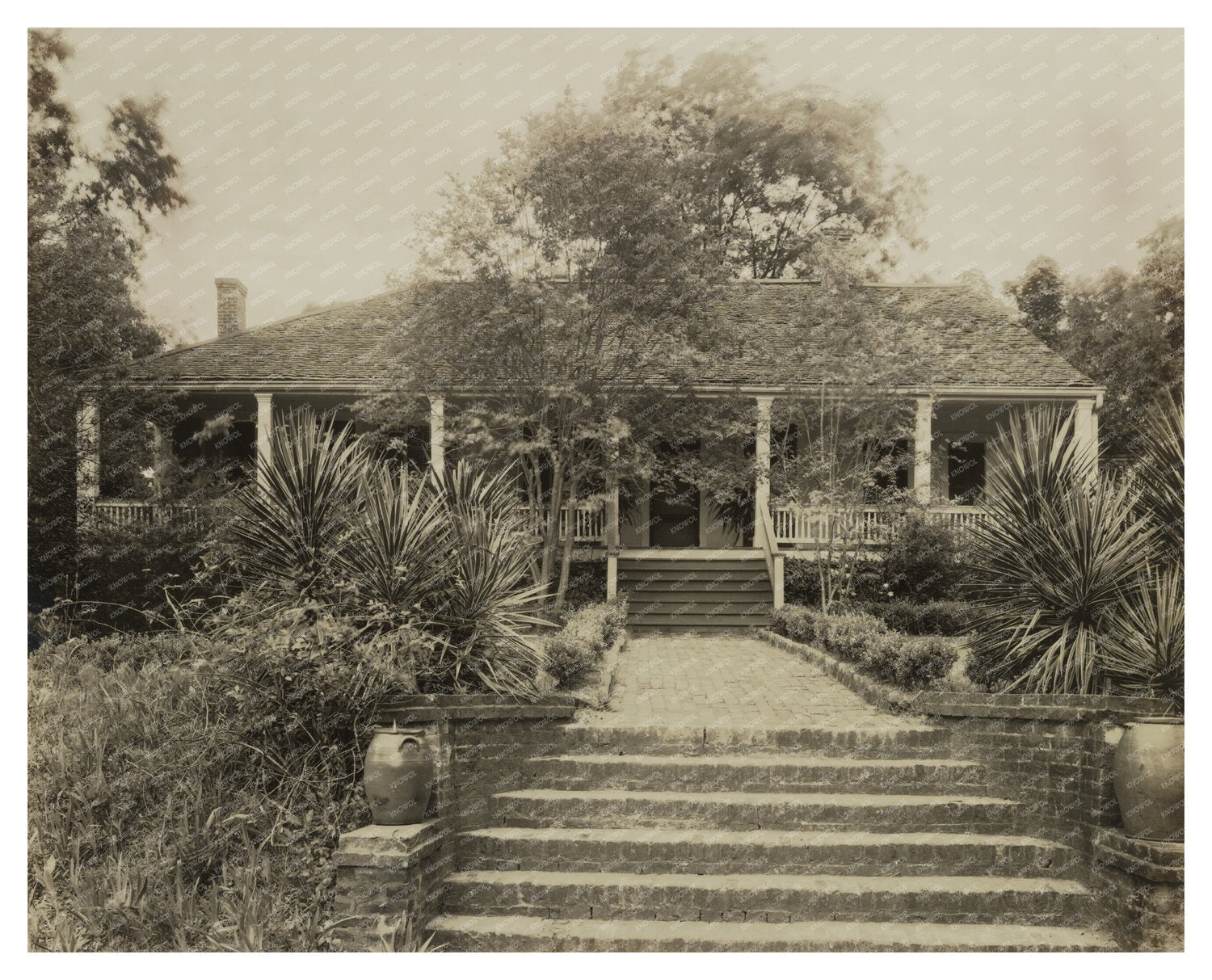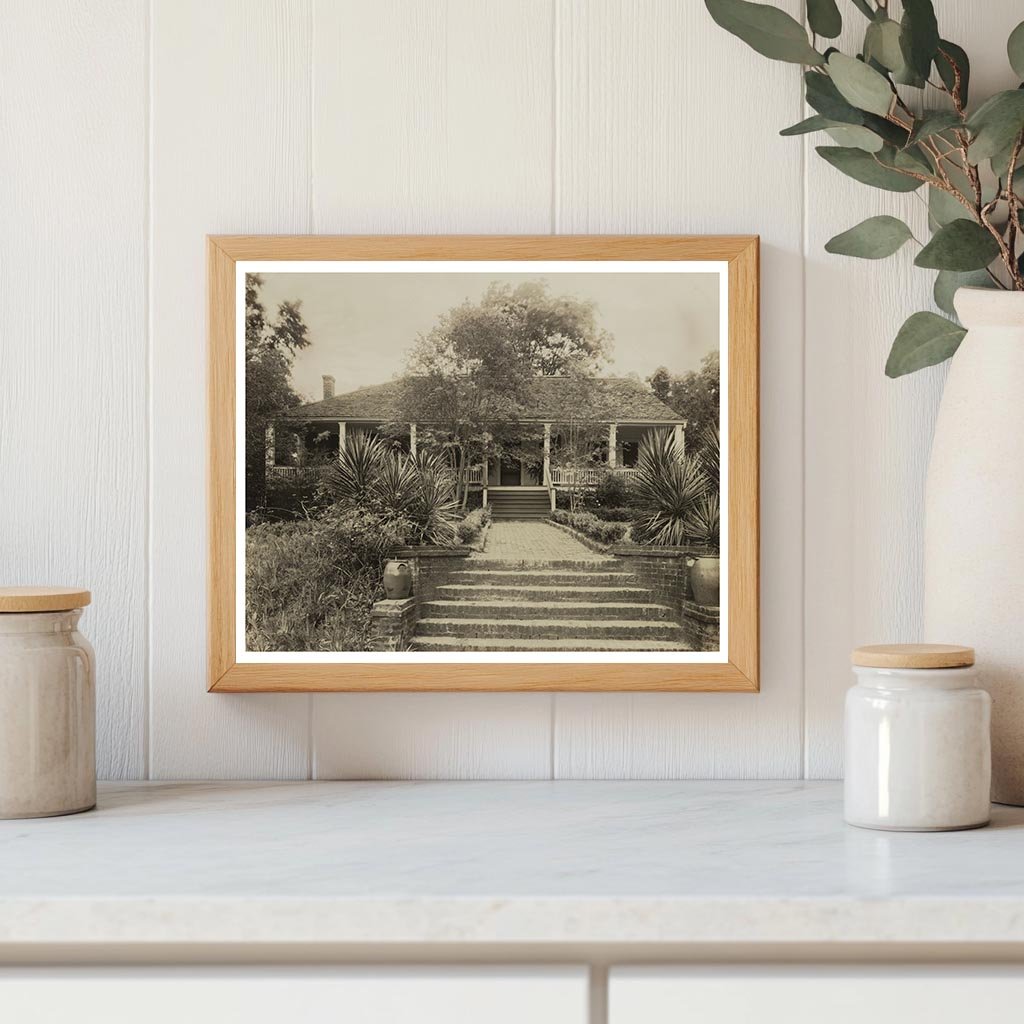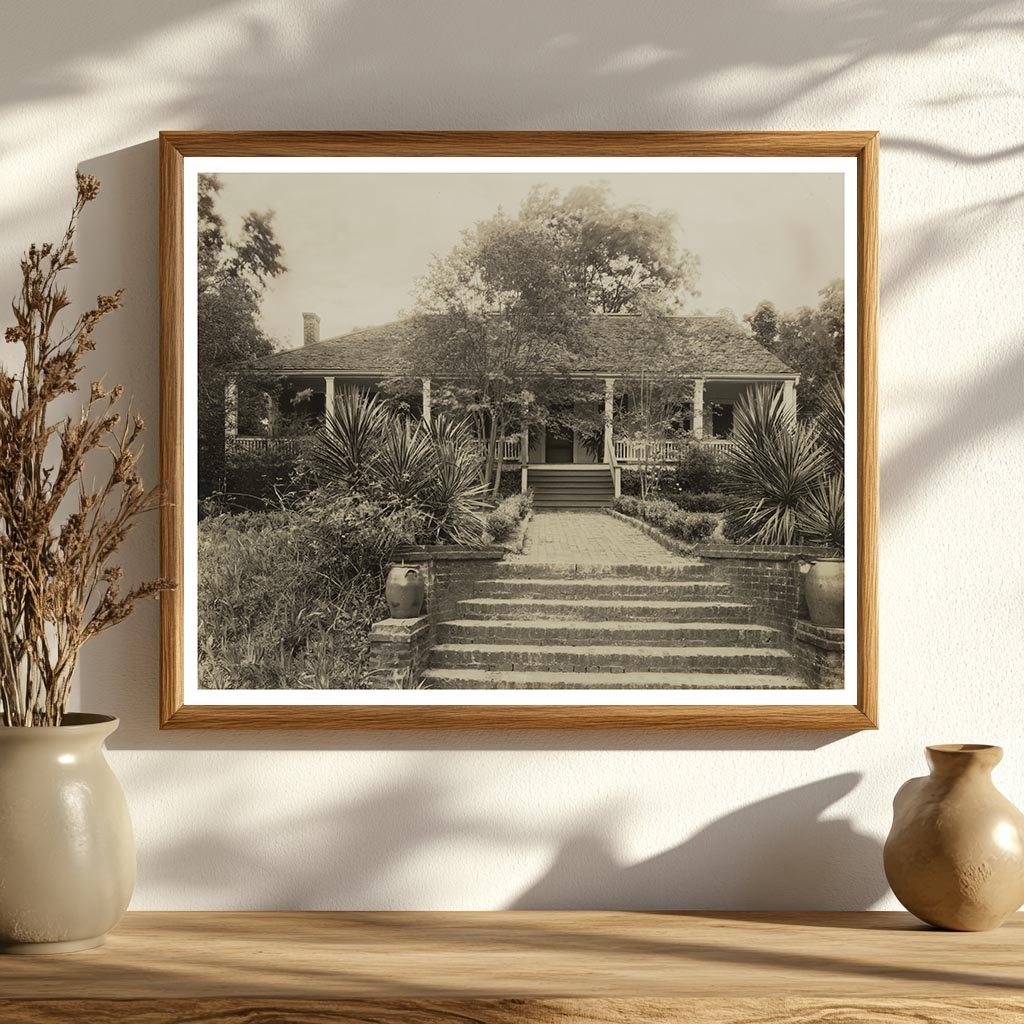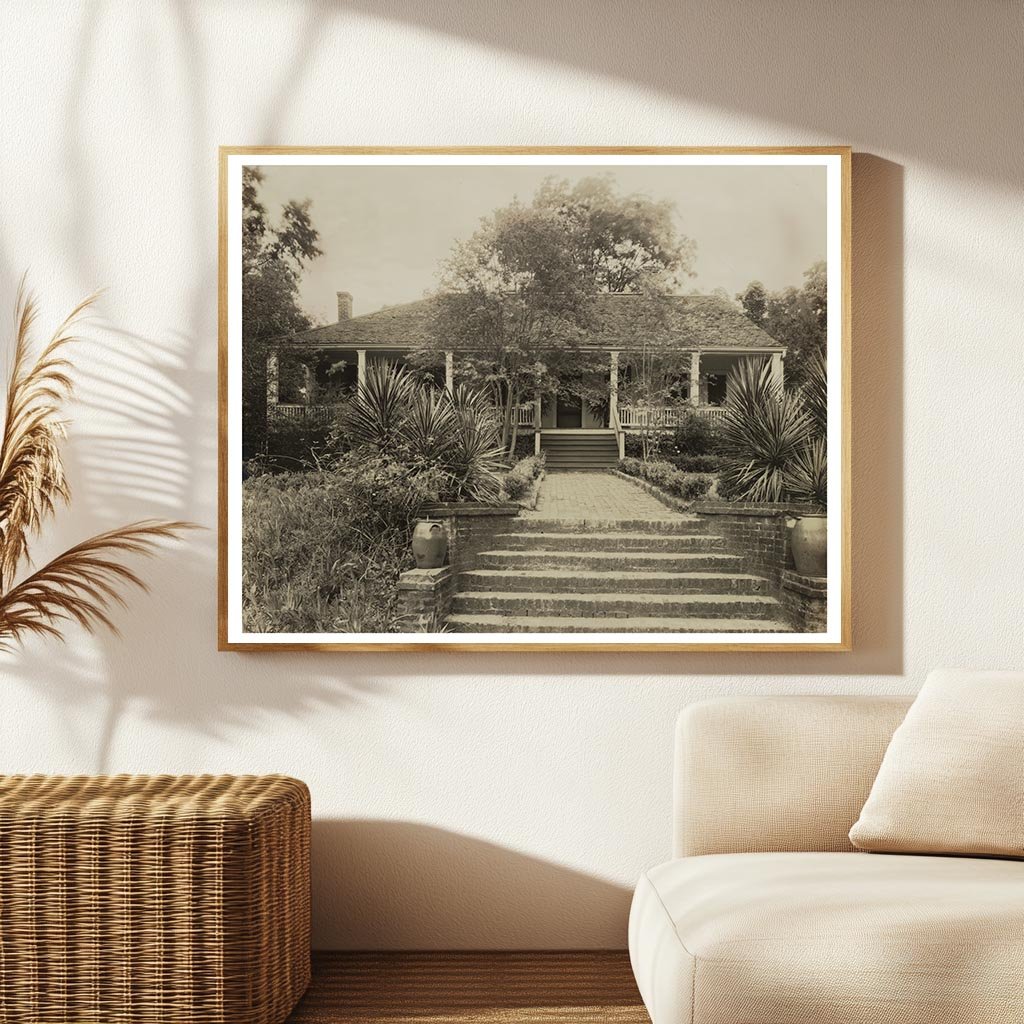



Hope Villa, Natchez MS, Historic Architecture 1789
This vintage photograph captures Hope Villa, a historically significant structure located in Natchez, Mississippi, within Adams County. Built around 1789, the villa showcases simple Spanish provincial architecture, blending elements from both English and Spanish influences. Originally constructed under English ownership, a notable addition was made in 1790 by Spanish Governor Carlos de Grandpre, who enhanced the property with a gallery supported by sturdy, ornamented columns.
The villas storied past includes ownership by Mary Routh Ellis, who sold the property to Eli Montgomery in 1833. For nearly a century, it remained within the Montgomery family. The architectural design features distinct characteristics reflecting the cultural integration of the time, making it an important example of early American residential architecture.
This image is part of the Carnegie Survey of the Architecture of the South, which aims to document significant structures from this period. It serves as a valuable resource for those interested in the architectural heritage of the region.

Hope Villa, Natchez MS, Historic Architecture 1789
